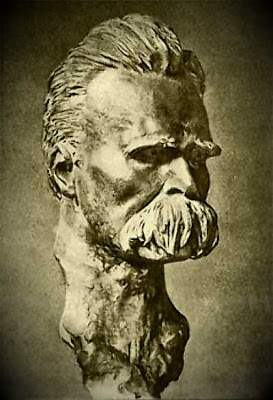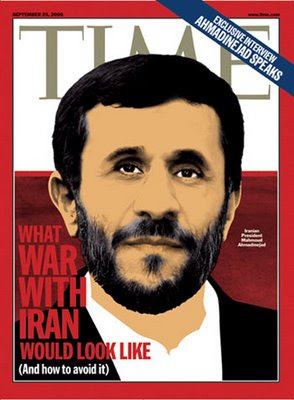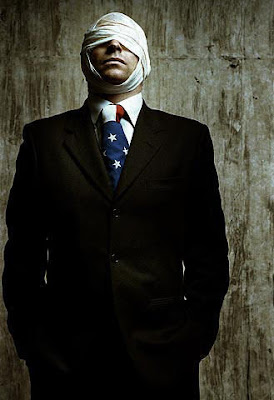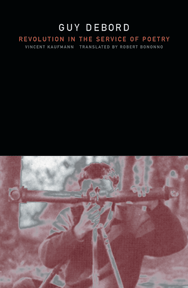> Owners and readers of the paper edition of Ny Moral will probably recognize the cover illustration of the Norwegian translation of Nikanor Teratologen’s fantastic text Äldreomsorgen i Övre Kågedalen (2007, Damm Förlag (originally published by Norstedts Förlag 1992)). Yes indeed, it’s Andreas Kalliaridis’ awesome art right there, which he made exclusively for Ny Moral back in 2004. Happy time!
Owners and readers of the paper edition of Ny Moral will probably recognize the cover illustration of the Norwegian translation of Nikanor Teratologen’s fantastic text Äldreomsorgen i Övre Kågedalen (2007, Damm Förlag (originally published by Norstedts Förlag 1992)). Yes indeed, it’s Andreas Kalliaridis’ awesome art right there, which he made exclusively for Ny Moral back in 2004. Happy time!
I consider Äldreomsorgen i Övre Kågedalen to be one of the very best Swedish books ever written, and now when it’s available in Norwegian translated by Stig Sæterbakken… wow, that’s just amazing. “Perleporten skal knuses!”
Go get it here. The Swedish version can be found here.
All posts by Indy
>Nietzsche – Morality as anti-nature
>
All passions have a phase when they are merely disastrous, when they drag down their victim with the weight of stupidity — and a later, very much later phase when they wed the spirit, when they “spiritualize” themselves. Formerly, in view of the element of stupidity in passion, war was declared on passion itself, its destruction was plotted; all the old moral monsters are agreed on this: il faut tuer les passions (“One must kill the passions”). The most famous formula for this is to be found in the New Testament, in that Sermon on the Mount, where, incidentally, things are by no means looked at from a height. There it is said, for example, with particular reference to sexuality: “If thy eye offend thee, pluck it out.” Fortunately, no Christian acts in accordance with this precept. Destroying the passions and cravings, merely as a preventive measure against their stupidity and the unpleasant consequences of this stupidity — today this itself strikes us as merely another acute form of stupidity. We no longer admire dentists who “pluck out” teeth so that they will not hurt any more.
To be fair, it should be admitted, however, that on the ground out of which Christianity grew, the concept of the “spiritualization of passion” could never have been formed. After all, the first church, as is well known, fought against the “intelligent” in favor of the “poor in spirit.” How could one expect from it an intelligent war against passion? The church fights passion with excision in every sense: its practice, its “cure,” is castratism. It never asks: “How can one spiritualize, beautify, deify a craving?” It has at all times laid the stress of discipline on extirpation (of sensuality, of pride, of the lust to rule, of avarice, of vengefulness). But an attack on the roots of passion means an attack on the roots of life: the practice of the church is hostile to life.
From Twilight of The Idols (1889).
>War is menstrual envy
>
Hans Blix
>Top Gear and the caravan holiday
>You know about Top Gear? I hadn’t even heard about that show until I stumbled upon these clips on YouTube a couple of days ago, but apparently there’s millions of trillions watching it, and it’s one of the most pirated shows ever. I never watch TV, so maybe that’s why I’m left in the cold when it comes to such high quality stuff as Top Gear.
Mind you, I have seen nothing but these three clips, so I might be totally out of it here, but I found them really funny. Three old goofballs trying to pimp their rides. So very much anti-bling-bling-MTV I just had to like it.
And I can relate to that evil shit that is caravan holidays as well. I was born and bred in a trailer park. Well, not really, but I’ve sure spent my fair deal of darkness on the road and in them bloody caravans. I think I hated every minute. The worst thing was going abroad and missing Rockbox.
Check these clips from start to finish, and then tell me I’m wierd. I find them funny. Am I getting old?
>StSanders shreds!
>These videos have been floating around on YouTube for a while now, and they are really too good to be missed. This StSanders fella who makes these “shreds”-videos is a genius at what he does. I still laugh my ass off to the Metallica video, and I’ve watched it twenty times already.
>Ahmadinejad and honesty
>
What will Ahmadinejad’s outspokenness ultimately lead to? I must say I’m very fascinated with what he has to say. I whole heartily agree with his deep critique against Zionism, and his personal letter to Bush was just… wow! What at least seems to be honesty is something rarely shown in politics today. Perhaps I’m just misguided… Time shall tell.
Until then, feel free to read this interview and his letter to Bush, and by all means, please watch this interview (please bear with the embarrassing translator idiot and his fake ass broken English, that’s of course just them false Americans deliberately trying to make Ahmadinejad look stupid):
(please notice that they don’t make fun of his language in this clip)
(and notice, he clearly emphasizes: “I am not saying that it didn’t happen at all”)
Mahmoud Ahmadinejad, Channel 1, Iranian TV, on October 6, 2007
>Situationism, Part 3
Mankind, he said, does not live by bread alone, but also by poetry.
…the situationists attempted to introduce poetry into everyday life understood as something beyond work and economy.
The real revolution would take place beyond need, somewhere closer to desire. From Guy Debord – Revolution In The Service of Poetry by Vincent Kaufmann (2006)


